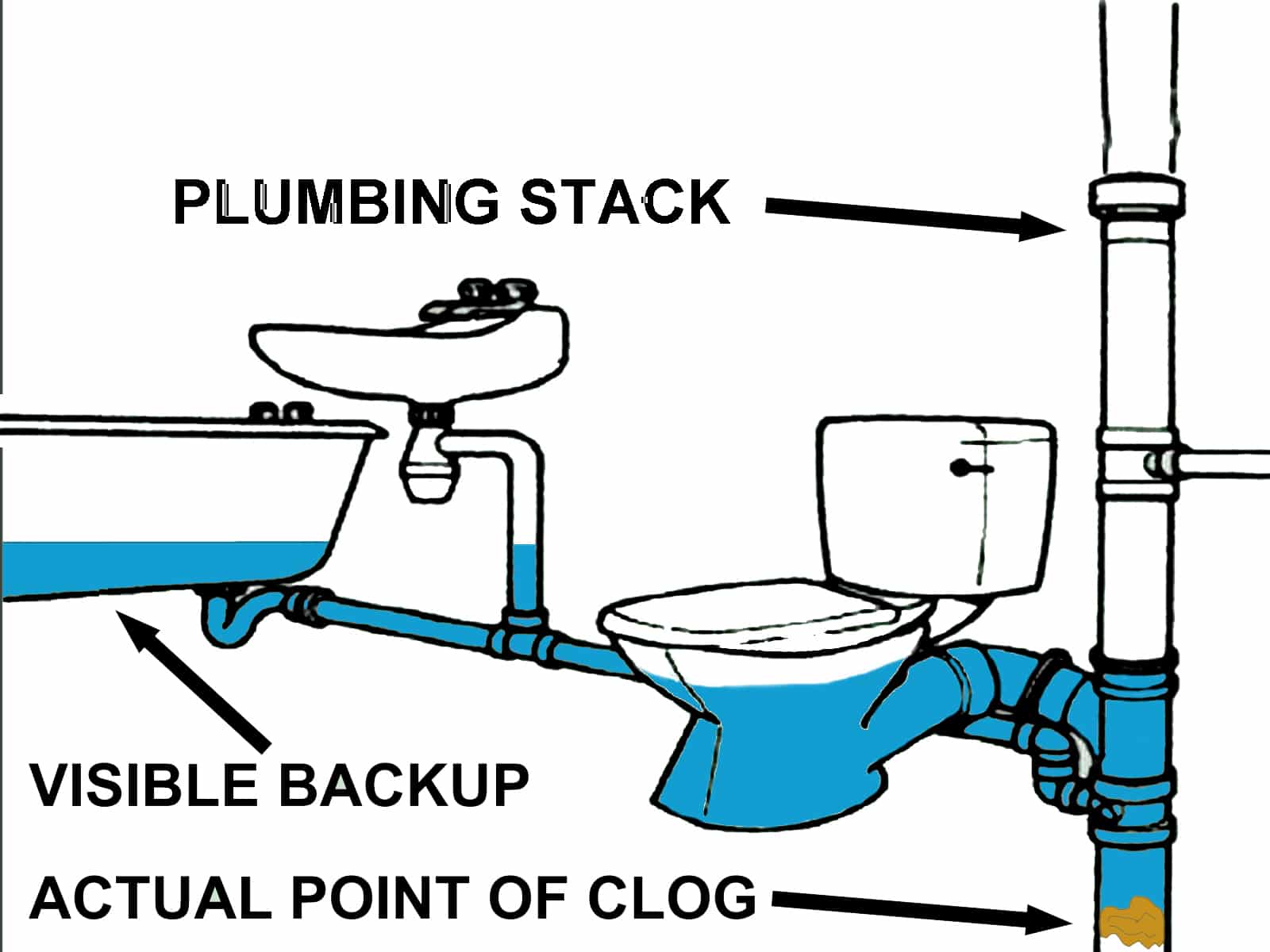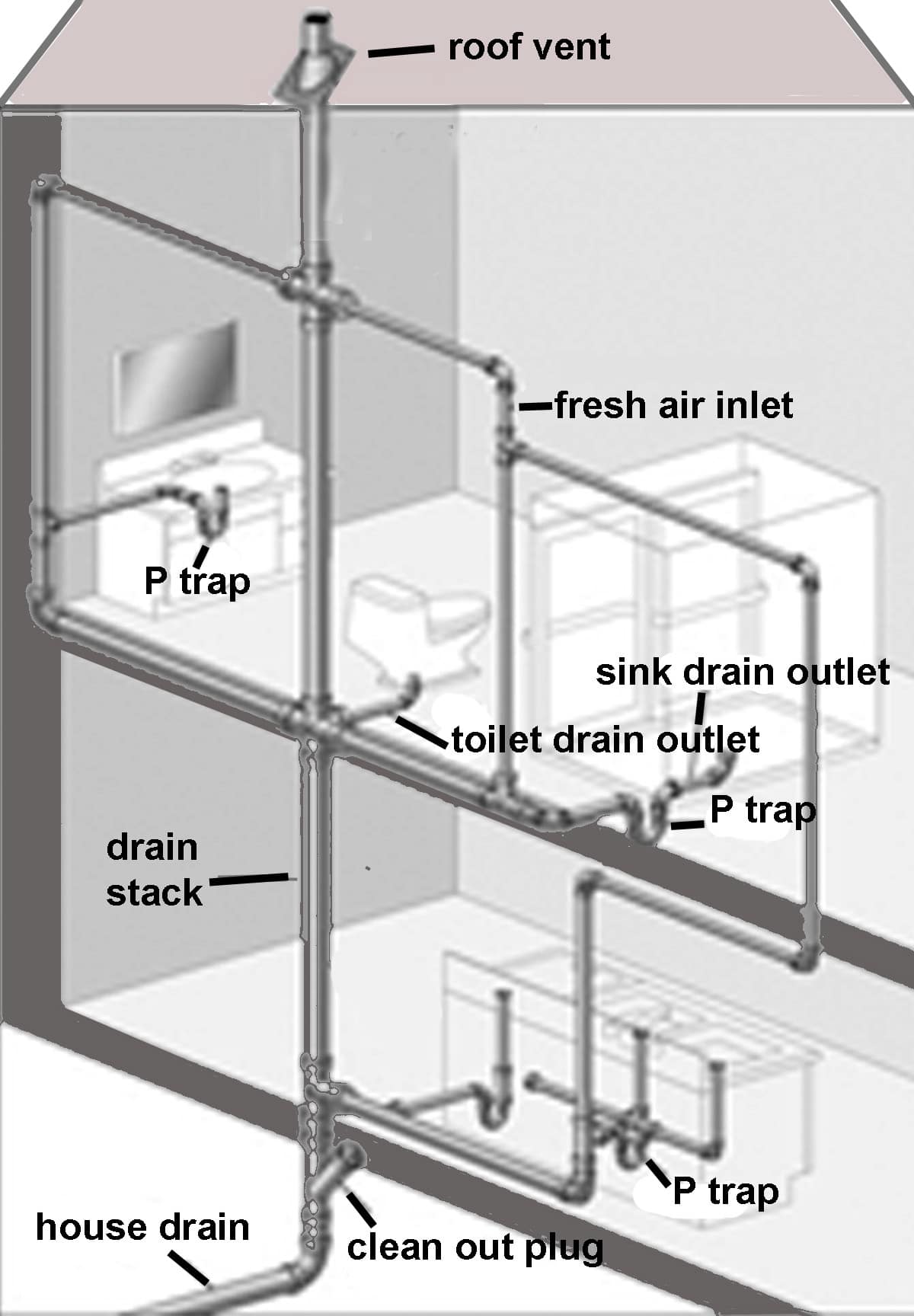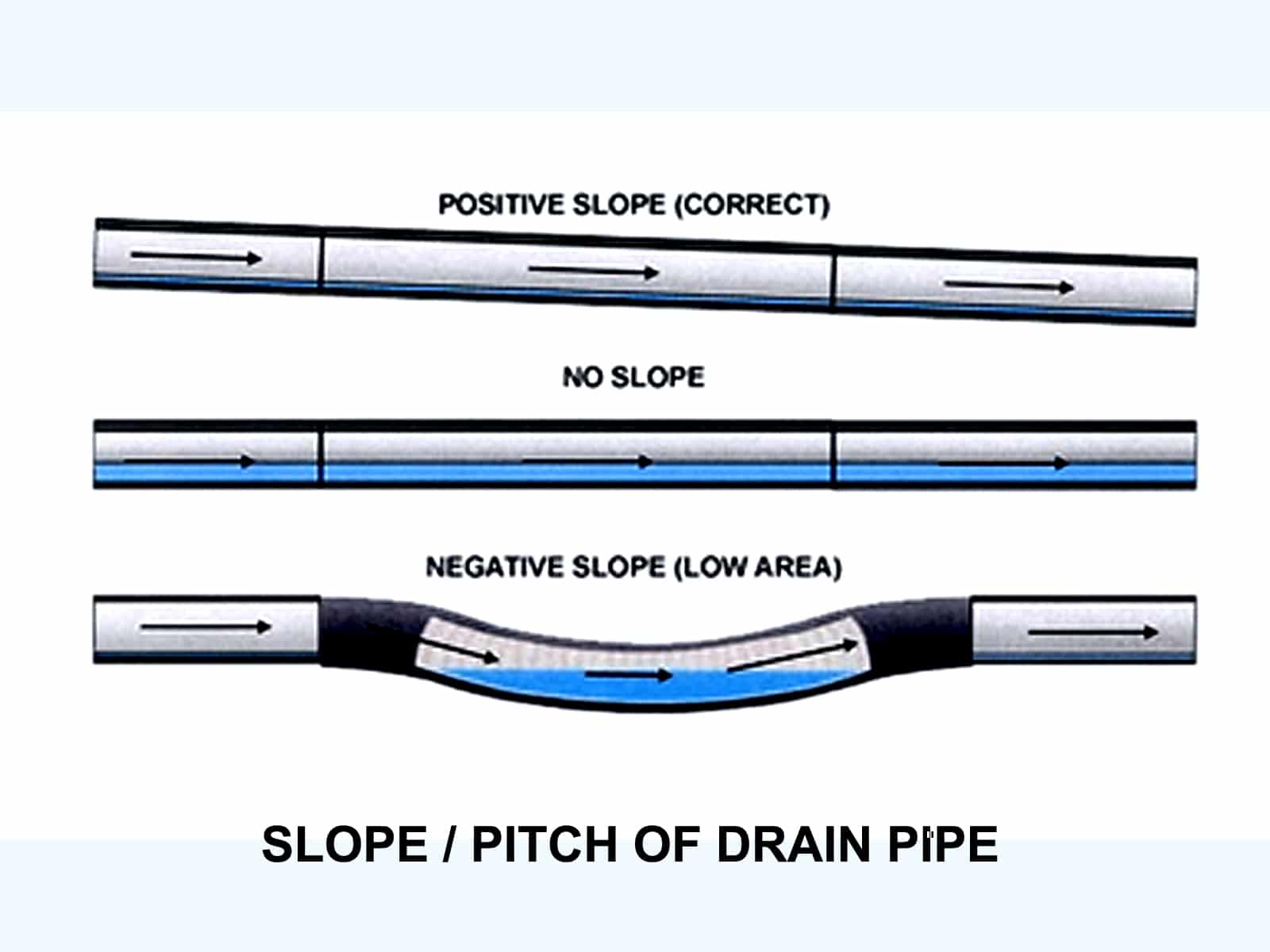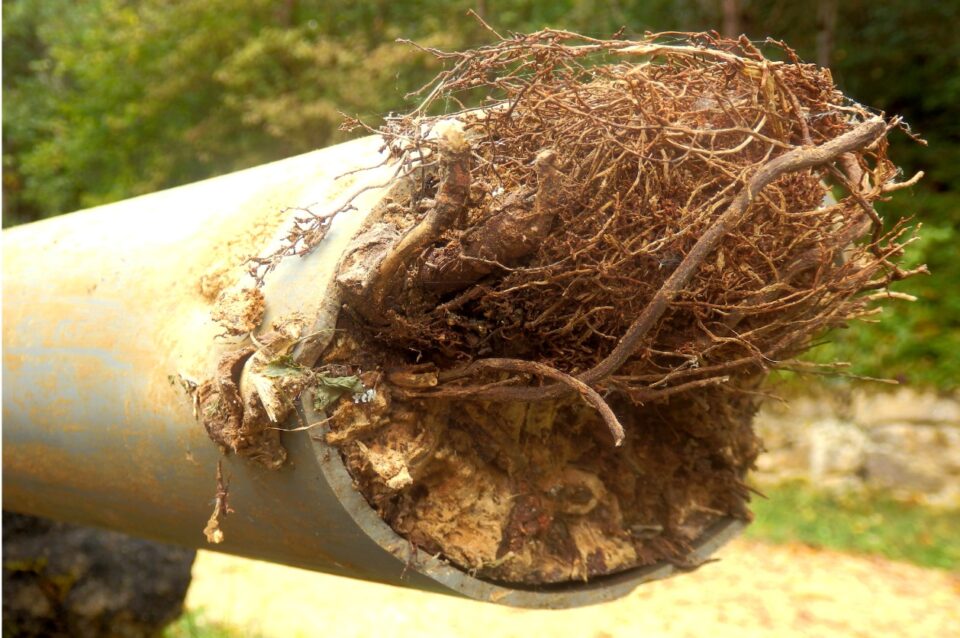Dealing with a clogged plumbing stack can be difficult and confusing if you’re a homeowner. So it’s a good idea to learn a little bit about your home drain line system first.
A plumbing installation is comprised of numerous different components designed to work together. This ensures that your house leaves no trace of household wastewater or odor for many decades. In NYC there is a comprehensive plumbing code that is reviewed and updated periodically.
Plumbing is similar to a big tree, with a lot of protruding branches connected to a trunk. In this case, the branches are smaller pipes that reach out to water fixtures inside your home. These include your kitchen sink, dishwasher, bathtub, bathroom, shower, etc. These branches typically connect to a vertical drain line called a stack. Typically you will have either a cast iron or pvc plumbing stack as the material used.
The stack is considered a main drain line. It collects and distributes wastewater from all those smaller pipes to the main house drain. Your wastewater then travels to the house sewer, the city sewer line, and then to the public sewer treatment facility.
In some areas, private septic systems are still in use. Obviously, an important part of this elaborate pipe network is the plumbing stack. Also often referred to as a vent pipe, this part usually protrudes outward through the roof.
What is a Stack in Plumbing for a home drain system?
All parts of the plumbing installation that handle wastewater are often called a Drain-Waste-Vent (DWV) system. As the name suggests, the system is made up of three main components:
- Drain pipes, which collect wastewater directly from water fixtures. These fixtures can include your toilet, kitchen sink (secondary drain line), shower, or bathtub.
- A waste pipe is the main drain line. The main house drain is where wastewater from all drain pipes meets and then flows to the treatment facility (primary drain line).
- A vent pipe (or vent stack) allows for air displacement so the water can flow freely inside the main drain line.
The diagram above shows a representation of how a simple DWV system is designed. All drain pipes from water fixtures are connected to a long vertical line, then to the main house drain line.
Wastewater flows in a downward direction due to gravity. That is the basic principal of almost all drain systems. This also means that only the bottom part of the vertical line acts as the main drain line. The upper portion of the pipe system is the actual plumbing stack.
The basic principle of how a drain stack works
Wastewater needs an air passageway behind it in order to flow freely without gurgling, and this is where a plumbing or drain stack comes in. It allows the air to come in and out of the pipe as necessary. When wastewater flows down the drain line, it sucks in a good volume of air to avoid creating a vacuum.
In times when the drain pipes are dry, the vent is the escape hatch for odors and all toxic gaseous materials to escape. That is why vents are above your roof line, and above your point of detection.
In many older homes, drain stacks are typically made of cast iron. It is a good strong material, but it will start to deteriorate in about 80 years or so. Some older drain pipes can be made of galvanized steel, which unfortunately is subject to rust, corrosion, and getting brittle with age.
Plumbing materials change over time
The use of cast iron and galvanized steel was soon replaced with rust-resistant materials such as ABS plastic. Since the 1970s a newer material, called PVC, has taken over almost all newer plumbing installations. Copper pipes are still used, but only in rare cases. Local building codes do change over the years. Therefore, it is not uncommon to see plumbing installations in many homes that use a combination of materials.
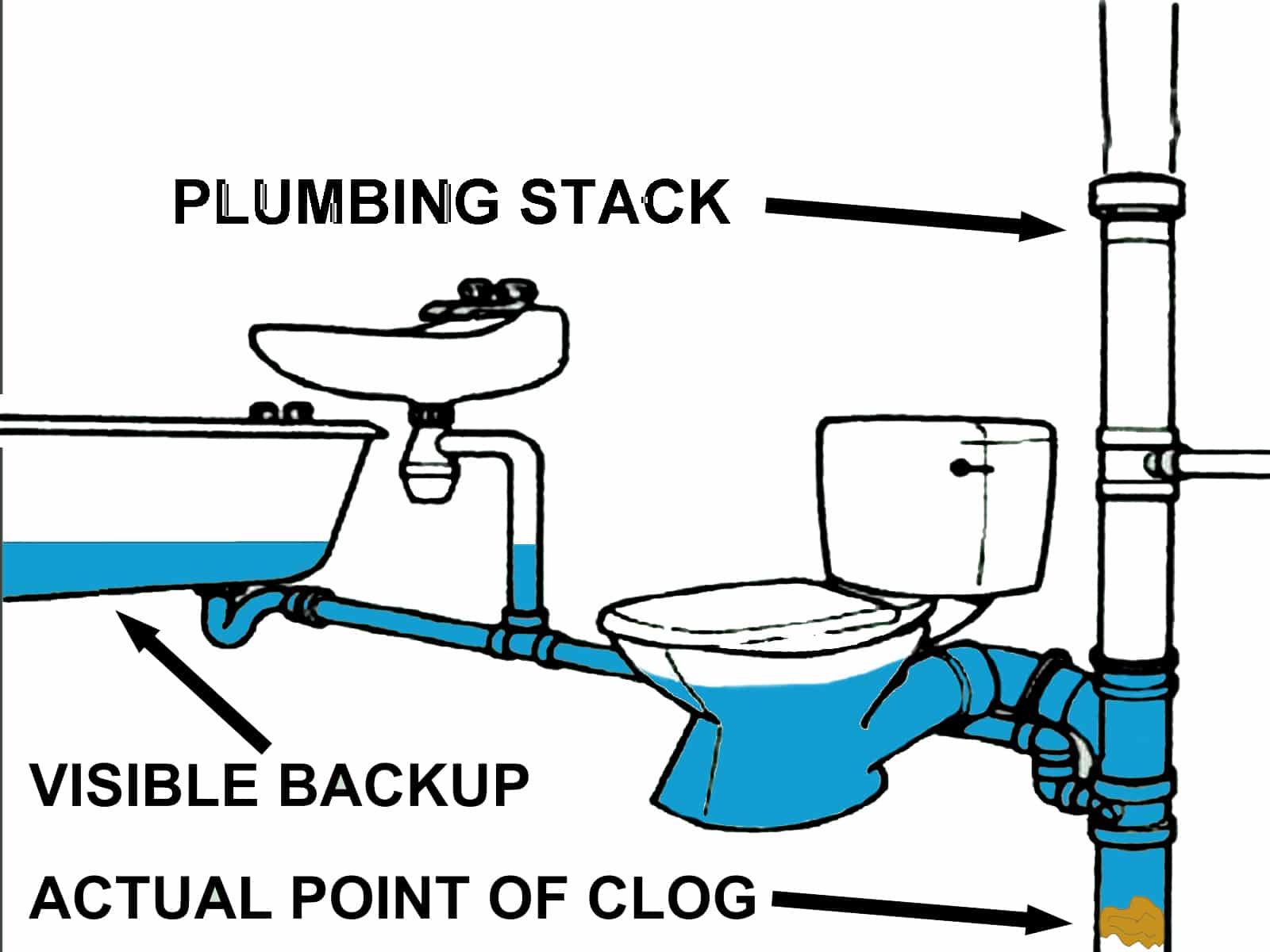
A Clogged Plumbing Stack
Your plumbing stack is connected to all branches of your drain pipes, including both primary and secondary drain lines. Therefore, plumbing stack problems will affect many parts of your plumbing. This makes dealing with clogging issues in this part of the installation more difficult than a typical clog. One of the main reasons is that the symptoms are almost identical to a minor clog.
For example, slow drainage and gurgling sounds when you flush down the wastewater can actually be a clogged drain stack. At this point, the first thing that comes to mind is a partial blockage in a secondary drain pipe; but that may not be the case at all.
When you cannot find any obstruction, the next thing to check is your primary drain line. If you cannot find anything, you may choose to disassemble the p-trap to which the fixture is connected. But, perhaps again, to no avail. All those procedures, in that particular order, are indeed necessary based on the noticeable symptoms. When finally you realize the problem is more complicated than you expected, then it is time to call a professional drain cleaning service.
After checking all possible issues without results, a professional drain service should be aware of the fact that the vent or plumbing stack can be the source of the problem. One thing that makes the repair quite difficult is that the plumber may need to locate the drain clean-out on the stack. In some cases, the clean-out may have been mistakenly walled over or covered. Someone with an understanding of plumbing design is best suited to locate a clean-out.
A Serious Blockage Poses Serious Issues
In the event of a totally clogged drain stack, there will be no more gurgling sounds. As a matter of fact, the vacuum in the vent can be very strong that it sucks water out of the entire p-trap connecting to it. If water from a p-trap is moved to the plumbing stack; it also means there is nothing to prevent odor-toxic sewer gasses from entering the living space of your house.
A Clean-Out Gives Access To Your Plumbing Stack
Referring back to the image above, a primary drain line has a clean-out plug to access the inside surface of the pipe. It also allows for easy access to the vent from below the soil. The plug is a Y or T-shaped fitting designed to give quick access to a primary drain pipe. This allows you to clean out serious obstructions in your plumbing system.
However, the culprit of a clogged drain stack itself is not always accessible from the clean-out. In extreme cases access from the roof is necessary, and this is a job best left to a professional.
Where can a stack blockage be cleaned out from: The 2 typical access points
Depending on the issue, the plumber can either clean the obstruction from the clean-out access or from the roof. In any case, it takes a knowledgeable and experienced plumber equipped with modern plumbing tools to get the job done. Some of the most common tools used for a clogged plumbing stack include a commercial-grade electric snake auger and a hydro sewer jet.
Balkan Can Expertly Clear A Clogged Plumbing Stack
The Balkan family of companies has been in the NYC plumbing industry for more than 70 years. Balkan’s reputation is based upon employing only professionally trained plumbers, who are equipped with top-of-the-line plumbing and drain cleaning equipment. The company meets and even exceeds the requirements to clean and handle both residential and commercial plumbing installations.
The Team To Trust
Naturally, Team Balkan’s expertise includes correcting a clogged drain stack. This is an area where typical DIY-repair-people, and an inexperienced plumber, should avoid due to the difficulty and risk involved with the job. It requires a good understanding of the plumbing installation to prevent recurrent issues. It also requires strict safety measures to avoid job-site accidents. If you need it done right the first time, contact the Balkan Drain Team.

